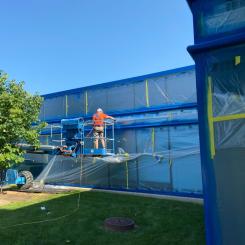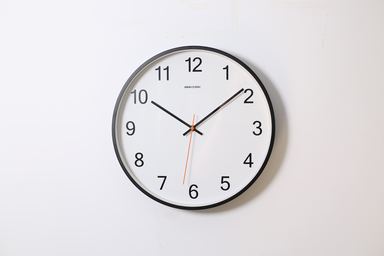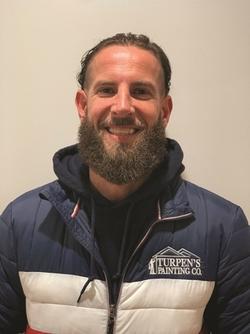The Future of Paint
12 February, 2020
12 February, 2020

Humans have always worked on ways of making things faster – the Pony Express, for instance. McDonald’s. Wayne Gretzky. Social media lets you make a fool of yourself in record time. Speed can come at a price, but when done correctly, speed can save money and produce better results. Commercial and industrial painting has long made use of robotics and automation, and now it’s just starting to hit the residential and commercial painting world. Technology is working to improve the process, from training, to painting itself, to everyone’s favorite – cleanup.
Kickin' it Off With the Cleanup

The Brushmate CAV-JET Pro will significantly cut down on brush cleaning time.
When it’s the end of the day and time for the crew to go home, who doesn’t want to spend an extra 20 minutes washing paint brushes under a hose? How did so much paint get into the brush anyway? If you could start cleanup at 4:55 instead of 4:30, imagine how much more painting you could get done and how much more water and planet you could save.
Over the past 20 years, Ted Brackett of Seraph Enterprises of San Francisco, California, has been working on a solution, and we say if it takes 20 years to save 20 minutes, it’s worth the wait. Ted’s career has built on creating groundbreaking products, and he’s got at least 20 patents to his name. His research may have raised a few eyebrows, as he did his field testing by going to jobsites and asking to clean brushes at quittin’ time, and what kind of Scrooge would say no to that? The result was the Brushmate CAV-JET PRO [CAV is short for cavitation], which takes advantage of modern technology to clean brushes quickly and thoroughly. “The industrial design and engineering of the CAV-JET has evolved alongside the current battery technology that has made it possible to scale back the product’s size and weight, yet still have the power needed to clean 50 paint brushes per charge,” he said. “My directive was to create a product that truly works. There are far too many ‘gimmicks’ on the market.”
Some of us in the Midwest remember a store called Shop & Save, where they promised, “The more you shop, the more you save,” and Brackett says this is the same with the CAV-JET: the more you use it, the more time and money you save. “We have automated a process that cannot be duplicated by manual cleaning,” said Ted. “It’s not possible to clean a brush by hand as quickly and thoroughly as this system can. It is also not possible to manually clean more than one brush at a time; therefore, comparing the two methods of cleaning shows a dramatic contrast. There are a number of variables that dictate how long it takes to clean a paintbrush, but to thoroughly clean one that has been used all day can take 10-15 minutes to ‘truly’ clean.”
Along with time savings, imagine the money you’ll save on labor if your crew can clean a brush in a minute and a half instead of 10-15. “Change to The Brushmate CAV-JET PRO, cleans two three-inch brushes in 90 seconds, and takes 7 ½ minutes to clean 10 brushes,” he said. Along with that, your brushes will last longer, so you won’t have to buy new ones as often.
And, it won’t half-butt the job. “The paint brush is thoroughly cleaned like new every time. It doesn’t get tired at the end of the day, or take off early on a Friday. Brushes that have been left out to dry for two or three hours can be cleaned, but this will extend the cleaning to approximately five minutes,” he said. If it’s rock hard, say hanging in the garage for three years, then it’s a paperweight. “You’ve ruined it…throw it away.”
It’s not on the market yet, but Brackett tells us to look for the ribbon-cutting in the very near future. It might be a bit of an investment, but think of the savings! “Due to its cost saving benefits, it will be priced alongside other comparable smaller contractor-grade equipment such as airless rigs, HVLP, etc. We have in design a one-brush model that will serve the small painting outfit as well as the DIY markets. The Brushmate CAV-JET PRO is the first power tool to simultaneously combine and automate all the essential elements of a successful cleaning process, including the hydrodynamic power of cavitation. I could compare it to the very first airless sprayer of pressure washers with regard to automating a process or increasing productivity, or other industry tools such as the cordless power nailer/nail gun, which has taken the place of the hammer for production.”
My New BFF
FORJAK's B.F.F. System applies paint quickly and consistently.
Here’s a fun job – paint this big box store, this grocery store, this discount merch mart… It’s 200 feet long, 20 feet high, no windows in the back, all one color, and suddenly those creative juices start flowing like Monet on a foggy morning. Or, not so much. Wouldn’t it be great if it just “got done” and you could engage your crew in something more interesting? Matt Palmisciano and Adam Logan, partners in Forjak Industrial in Columbus, Ohio, specialize in painting just those kinds of walls-of-Jericho behemoths. “We paint mostly exterior, between 50 and 70 big box retail stores a year, and a bunch of industrial warehouse work as well,” says Matt.
Adam’s business was doing well, but he was getting tennis elbow spraying K-Marts – and without the grand slam trophies to show for it. He started tinkering in his garage, got some patents, and opened the door to some truly revolutionary machinery. Palmasciano got involved shortly after. “I was going to grad school and into software and technology,” he said. “I was looking for a technology entrepreneurial thing and he was looking for a business partner and that’s how we came together.”
What they’ve got are two types of robotic machines designed for larger or smaller projects; they work over four times faster than a painter with a sprayer. “When you factor in the prep and labor involved in setup, it’s still 21% faster,” says Matt. Called the “Better Faster Finish Painting System,” the B.F.F. System was developed to apply a more consistent coating faster with less fatigue, manpower, and overhead expense on high-volume, low-detail structures. “This machine and additional patented inventions are revolutionizing the commercial painting space,” says the FORJAK website.
We had to ask the question – the same question that popped up when the paint roller elbowed its way onto the applicator shelf – is this putting painters out of a job? Matt says that it makes the job even better. For one, he says, there’s a labor shortage and a lot of business owners like him can’t find enough painters to… uh… paint. Also, it allows the painters on staff to work smarter and not waste their time with grunt work, so they won’t have to worry as much about repetitive stress injuries.
“If you are in a good company that takes care of its people, wouldn’t you like the company to make more money with the same amount of labor?” he asks. “We’ll always need the painter… but the repetitive boring stuff? We don’t see the painter going away, we see [a painting company] doing more work with the same amount of people. I love my guys and I have a hard time finding guys like the guys I have. For every five guys I hire maybe one sticks. I’d rather keep the guys I have, pay them more, make their lives better, and have them be more loyal to me.”
Along with that, you can get a better paint job. Set the millage and the parameters and you get even coverage that “won’t miss a spot.” Plus, it won’t get tired at the end of the day and gloss over the last quarter of the store, even if it isthe part that nobody sees.
Above all, Palmisciano and Logan want to make a difference to the paint world. “Besides the money and doing it faster, it would be cool to say we helped introduce this kind of machine to the industry,” said Matt.
Virtual Confidence

A painter engaged in virtual training.
Training a new painter on a sprayer can be expensive and kind of messy; it’s not like you can put all that paint back in the bucket at the end of the day and start over again. If you’re learning to fly a plane, virtual experience is fantastic, since, if you make a mistake, it’s not catastrophic. While the stakes are much lower in our world – “it’s just paint, after all,” as some say –virtual training can save you several buckets full of time, money, and product. There’s a company out there already bringing this technology into the paint world; Jeremiah Treloar came to the phone to tell us about Virtual Paint Products based in Cedar Falls, Iowa.
“VirtualPaint is a highly adaptable virtual reality training simulator that mimics a fully customized painting and coating production environment,” the company website explains. Currently, it’s aimed at industries such as military, aerospace, automotive, and manufacturing, but Treloar doesn’t see a reason why it can’t go into a more commercial market as well, and he’s not afraid to voice his passion for the medium. “Virtual technology could be used to solve some of the challenges of hiring, onboarding, or recurring training in a way that can happen fast without consumables, without excuses, and where skills knowledge can transfer pretty quickly,” he said.
We might need to take a bite out of the future before your paint company will be able to take advantage of this type of training, but let’s say you can – what will you get out of it? “Just looking at spray finishing, the opportunity is endless,” said Treloar. It can simplify the training process, engage a painter, and motivate them to try to improve. “If we just start with basic skills, you could absolutely take a person that’s never painted before, very novice, and in a short amount of time ramp up what I would call their core skills, their fundamentals. They would quickly understand more of the automated repeatability, the standardized part of painting – what you do 90% of the time. I think that’s where we start.”
Not to mention virtual training can instill real confidence… someone could get out on the job after completing some virtual training and feel good that they know what they’re doing: fly that plane, gun that sprayer, paint that wall without worrying about hitting plants, windows, occupants, other painters, just doing it right. “I believe that confidence is a huge thing, especially if you’re trying to grow a trade,” said Treloar. “It’s an opportunity to quickly say, ‘wow, I’m pretty good at this,’ and you don’t have to ruin somebody’s walls to do it. The whole goal of confidence is when you’re done training, you’re like, ‘wow, let me do that!’ I think that's pretty powerful.”
º
The future might not be here yet, but it’s on the way: faster, safer, and more efficient.




Comments
Paint cleaner
Want to buy a brushmate pro, where do I get one?
In reply to Paint cleaner by Love the brush… (not verified)
Paint cleaner
Sadly it is not currently available.
Add new comment